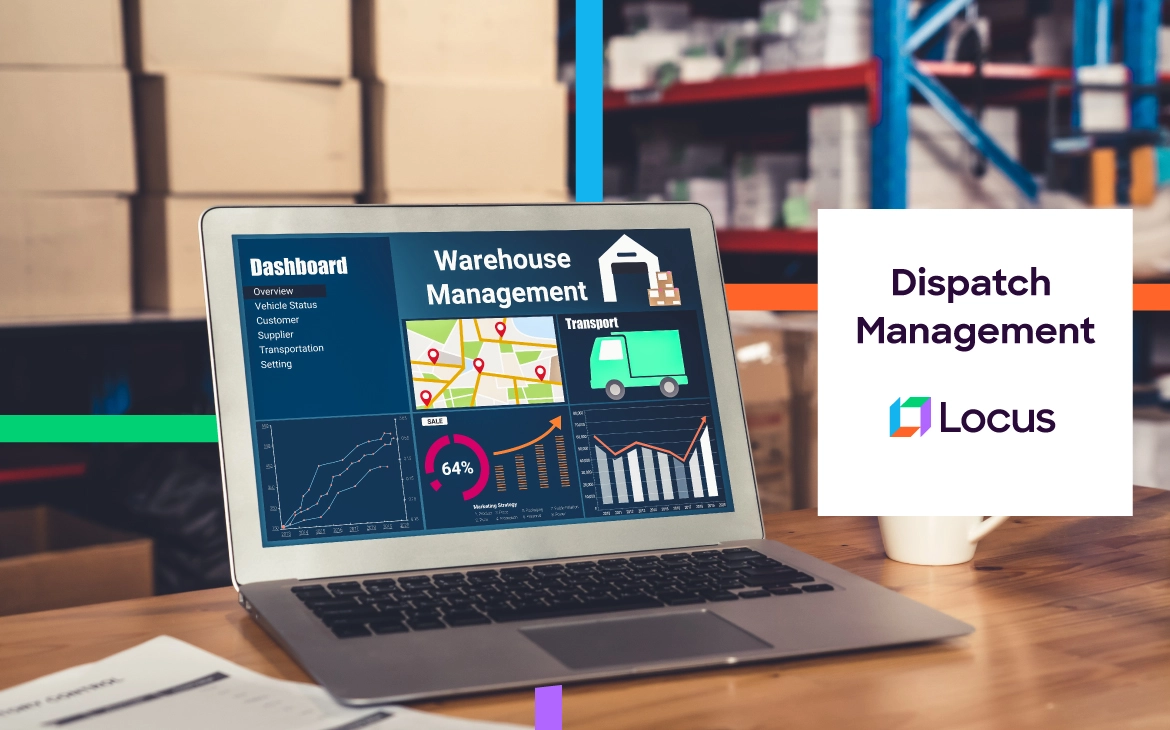Dispatch Management
How to Get Dispatch Management Right in 2022 and Beyond
Jul 12, 2022
5 mins read

You have watched a lot of movies that center around the theme of time-loop. Haven’t you? (Don’t worry, I will not ask you to name them!)
How do you feel when you experience the same stress today that you had yesterday? Damn stressful! Isn’t it?
You reach your office and find that there are loads of orders to dispatch, calls to make, trucks to arrange, and meetings to attend with multiple stakeholders. Adding to your woes, the packages that were to be sent yesterday are still lying in the warehouse. Also, there aren’t enough drivers to handle the massive order volumes for the day.
This is the same stress you had yesterday, and will likely have tomorrow.
We have to admit that dispatch management is a daunting task to handle, but it is not out of your control. All it takes to get your last-mile dispatch management process right is a few right steps.
Steps to get dispatch management right for your business
1. Plan your detention and dwell time
The time your drivers spend at a pickup point, delivery, or warehouse facility is called the dwell time. Detention time, on the other hand, is the difference between the planned time to load/unload goods, and the actual time taken to load/unload goods.
Say you have a driver who works for 11 hours a day. You have planned rides for the next 10 hours including his breaks. But he spends more than 2.5 hours at the warehouse facility to load/unload goods.
In an attempt to make up for the lost time, the unexpected detention time pressurizes him to speed up for the next delivery location. Beyond impacting on-time delivery targets, it leads him to overspeed on the road.
With a proper plan for load balancing and detention time, you can minimize your logistics delays. Visibility and data insights can provide you a rock-bottom foundation to accurately plan optimal detention times.
2. Fix realistic Expected Time of Arrival (ETA) targets
Some drivers complain that their dispatchers set ambitious ETA targets that only factor in the driving time. When ETAs between multiple stops are unrealistic, traffic, road closures, or vehicle downtimes can cause delays. The delay in deliveries in one location like a snowball can lead to further delays in subsequent dropoff points. Hence, it is crucial to fix an accurate and realistic ETA for delivery.
As a dispatcher, you want to reduce the time taken to deliver shipments at multiple stops.
Rather than setting unrealistic ETA for multiple stops and manually modifying them, it is better to automate the process. This is where route optimization can come in handy.
Route optimization is not just about planning cost-effective and shortest routes between point A and point B. A good route optimizer factors in real-world logistical constraints like traffic, speed limit, vehicle downtimes and ETA targets, and recommends the most optimal route.
3. Use data for smarter allocation of tasks

Questions like these might often come to your mind when you set out to dispatch. Before prioritizing and allocating tasks, it is important to have a clear understanding of your delivery agents. This detailed understanding of delivery agents isn’t possible without the help of data.
By leveraging granular data insights on real-world constraints and metrics like vehicle downtime, route deviations and Service Level Agreement (SLA) breaches, you can improve the accuracy of delivery schedules. With relevant data, you can save critical time and minimize errors while assigning delivery tasks more efficiently.
4. Enable clear and consistent communication

While it’s great to understand the past performance of your delivery agents, it is just 50% of the work. But there is another half where you should have clear and consistent communication with them.
Say you receive ad-hoc orders that need to be delivered by 4 pm. Suddenly there is a vehicle breakdown, and the packages are stuck in transit.
With real-time tracking software, you can find replacement vehicles in the vicinity, and ship packages instantly. It automatically updates the real-time order progress, route changes, SLA breaches, and new delivery schedules. These timely updates help you make quick and optimal decisions when delivery exceptions or delays occur.
5. Invest in a dispatch management platform
A dispatch management platform is an all-in-one tool that helps you handle all dispatch related processes effectively. Whether it is tracking orders, allocating tasks, planning delivery routes, communicating updates, or setting ETAs, dispatch management software simplifies all these disparate activities in a single, unified space thereby reducing your planning time and improving your last-mile efficiencies.
Get your dispatch management right with Locus!
Though dispatch management is becoming trickier, technologies in the last mile are advancing fast.
The Locus dispatch management platform is an all-inclusive last-mile dispatching tool that improves the efficiency of your dispatching process. Its advanced Artificial Intelligence (AI) capabilities simplify your tasks like order scheduling, assigning and prioritizing dispatch plans for a hybrid fleet. The platform also allows you to monitor ground activities in real-time and share live updates with your end customers. What’s more? It’s highly scalable and easy to use and fits in as you grow in the last mile space.
Looking to make your dispatch management productive, simple, and more efficient? Try a demo with Locus!
Related Tags:

Supply Chain Optimization
From the CEO’s Desk: Moving Beyond The New Normal to New Opportunities
Locus CEO, Nishith Rastogi met leaders and experts during Gartner Supply Chain Symposium/Xpo and shared his insights on logistics industry opportunities.
Read more
Last Mile Delivery Optimization
Delivery in Japan: Beating a Culture of Overwork with Last-Mile Excellence
Locus’ Dispatch Management Platform helps Japan’s delivery agents to get more deliveries made in a standard working shift by automating their operations.
Read moreMOST POPULAR
EDITOR’S PICKS
SUBSCRIBE TO OUR NEWSLETTER
Stay up to date with the latest marketing, sales, and service tips and news


How to Get Dispatch Management Right in 2022 and Beyond